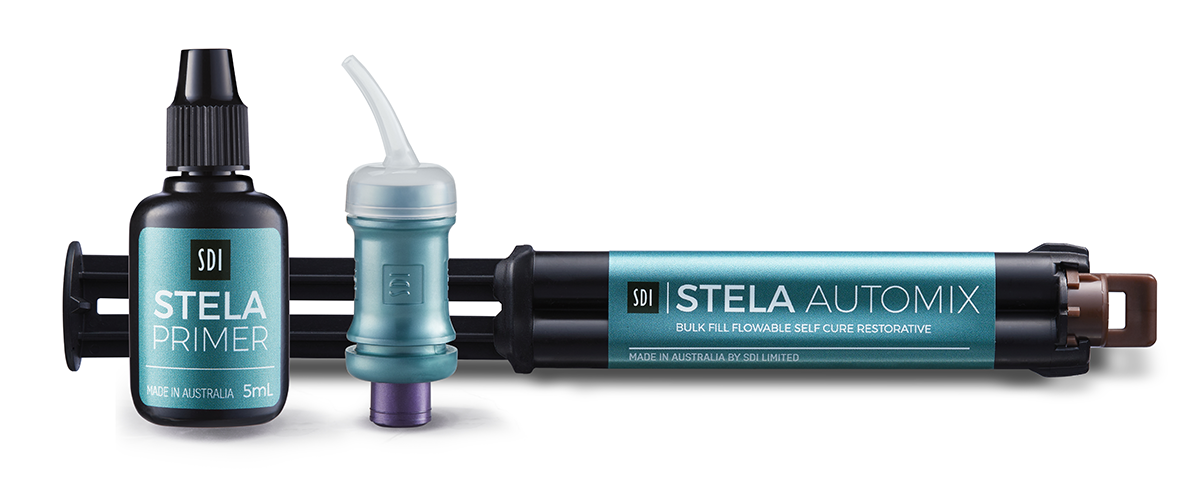Stela, a New Self-Curing Composite from SDI, Aims to Streamline Direct Restorative Dentistry
With just one universal shade, and a highly efficient workflow, this new composite is flowable and can bulk cure.
Image Credit: © SDI

Developed in partnership between SDI and the University of New South Wales, the University of Sydney, and the University of Wollongong, Stela is a new self-cure composite said to be well suited for Class I, II, III, and V restorations.
The composite system includes Stela Primer which provides the catalyst to initiate the polymerization process at the restoration interface rather than at the occlusal surface as is the case when polymerization is initiated with a curing light. According to a press release, Stela's polymerization sequence reduces stress to reportedly reduce the risks of marginal gaps, postoperative sensitivity, and restoration failure.
Stela polymerizes with a snap set process that converts monomers into a complex network of cross-linked polymer chains. This reportedly binds the fillers to provide the material with high compressive and flexural strengths.
Stela is available in a single shade with chameleon capabilities to blend in with surrounding dentition. The composite contains fluoride, calcium, and strontium, and is free of BPAs and HEMA.
The composite is placed in a two-step process with the primer placed first, followed by the restorative material. It reportedly can be placed in as little as 15 seconds because it eliminates much of the traditional composite workflow of etch, prime, bond, and light cure.
The Stela composite material and Stela Primer both contain the 10-MDP monomer which has been shown to enhance bond strengths to dentin and enamel. Additionally, it is highly radiopaque and available in either syringe or capsule delivery.
ACTIVA BioACTIVE Bulk Flow Marks Pulpdent’s First Major Product Release in 4 Years
December 12th 2024Next-generation bulk-fill dental restorative raises the standard of care for bulk-fill procedures by providing natural remineralization support, while also overcoming current bulk-fill limitations.